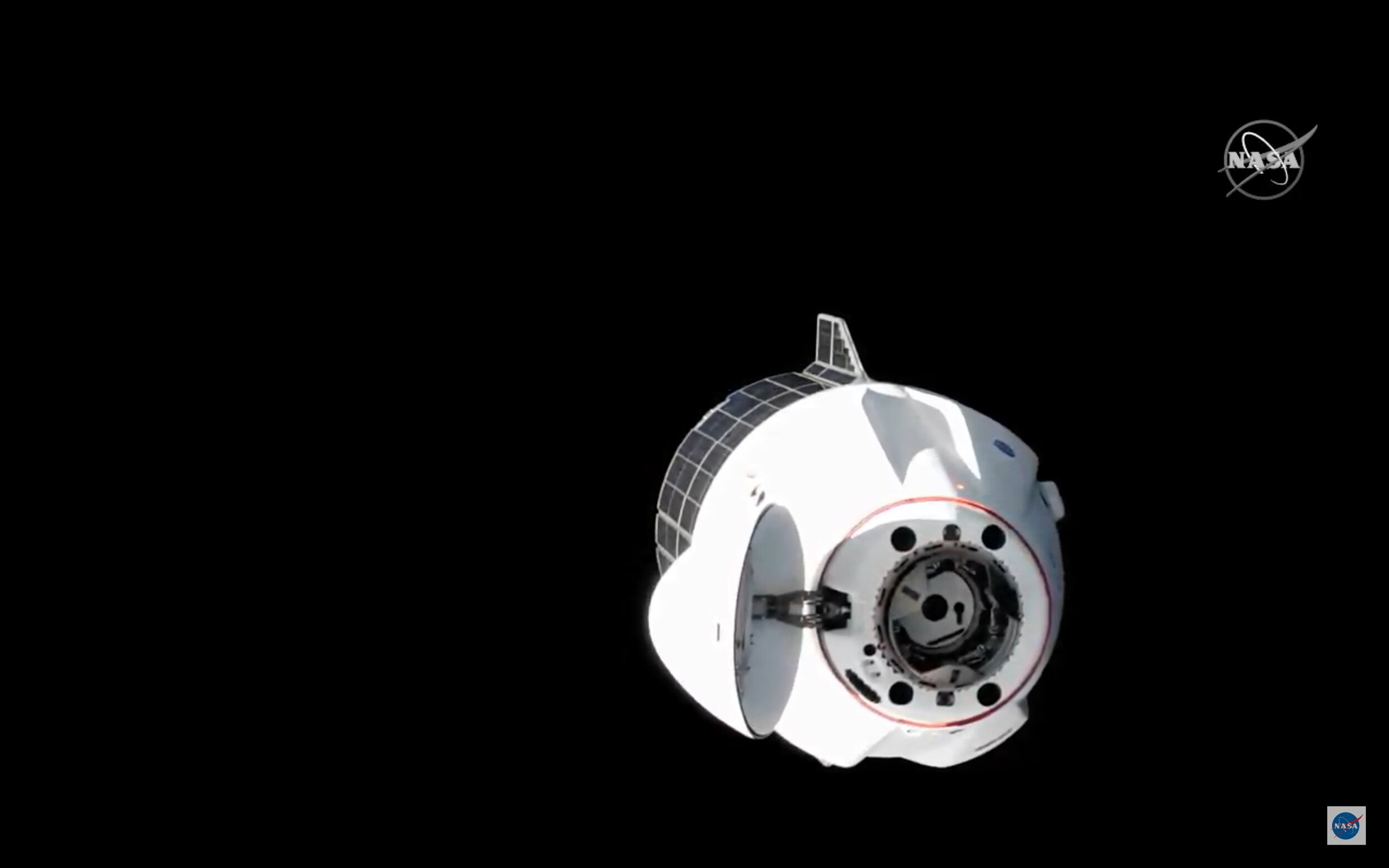SpaceX’s CRS-22 Dragon arrives at ISS with new arrays
/Some 40 hours after launch, SpaceX’s CRS-22 cargo Dragon docked with the International Space Station with new science and solar arrays for the orbiting laboratory.
Docking with International Docking Adapter 3 on the space-facing side of the Harmony module took place at 9:09 UTC June 5, 2021. Aboard is more than 3,300 kilograms of crew supplies, experiments and equipment for the seven-person Expedition 65 crew.
“It was a great approach and it was awesome watching it come on in. We’re glad its here,” said NASA astronaut Shane Kimbrough, who, along with NASA’s Megan McArthur, was monitoring Dragon’s approach aboard the ISS. “Looking forward to all the science and other goodies that it brought up, along with our [iROSA] solar arrays. It’s going to be a great few weeks as we get into Dragon and get things out.”
This is the 22nd contracted SpaceX resupply mission and the 2nd for the company under the second Commercial Resupply Services contract. It launched atop a Falcon 9 rocket at 17:29 UTC June 3 from Launch Complex 39A at NASA’s Kennedy Space Center in Florida.
According to NASA, inside the capsule is 341 kilograms of crew supplies, 920 kilograms of science investigations, 52 kilograms of spacewalk equipment, 345 kilograms of vehicle hardware and 58 kilograms of computer resources.
In the unpressurized trunk section is a pair of ISS Roll-Out Solar Arrays, also called iROSA, which are designed to augment the power production aboard the outpost. It’s the first of three pairs expected to be delivered over the next year or so.
When the space station was built in the 2000s, there it included eight massive solar array wings on various segments of the 110-meter-long Integrated Truss Structure.
The original 12-meter by 35-meter arrays were designed with a 15-year on-orbit life expectancy. The oldest two arrays are now over 20 years old with the other six approaching their service life.
According to NASA, the arrays are currently generating up to 160 kilowatts of power. When all six iROSAs, each measuring 6 meters by 19 meters, are deployed, the agency says the power production is expected to be boosted to about 215 kilowatts.
Later this month, the robotic Canadarm2 is expected to remove the arrays for astronauts to install them on the oldest solar array wings, located on the P6 truss segment on the far port side of the ISS.
Two spacewalks are scheduled — one on June 16 and another on June 20 — to install the devices.
There are several notable science investigations aboard the capsule. One is called UMAMI — Understanding of Microgravity on Animal-Microbe Interactions. It aims to use bobtail squid and bacteria to better understand the role gravity plays in shaping the molecular and chemical interaction between microbes and animal hosts, according to NASA.
Another is the Cell Science-04 study, which aims to characterize the molecular biology of tardigrades, also called water bears. The goal is to find genes involved in their adaptation and survival in high-stress environments.
Cotton root systems are also going to be studied in the TICTOC experiment, which stands for “Targeting Improved Cotton Through On-orbit Cultivation.” The goal is to learn how to develop cotton varieties that require the use of less water and pesticides.
There is also a portable ultrasound device aboard CRS-22 that astronauts will test in microgravity. NASA said it could become a critical medical capability for crews on long-term spaceflights, such as those to the Moon and Mars.
CRS-22 Dragon is expected to remain at the ISS for about a month while the crew unloads the contents of the vehicle.
Before undocking, the vehicle is slated to be loaded with equipment and experiments slated to be returned to Earth.
Once the spacecraft leaves the ISS, it’ll perform a deorbit burn and splashdown in the ocean off the coast of Florida.
NOTE: While this article was written by Derek Richardson, it was originally published at Spaceflight Insider.






